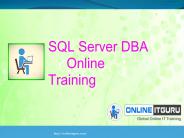SQL Authorization - PowerPoint PPT Presentation
Title:
SQL Authorization
Description:
SQL Authorization Privileges Grant and Revoke Grant Diagrams – PowerPoint PPT presentation
Number of Views:53
Avg rating:3.0/5.0
Title: SQL Authorization
1
SQL Authorization
- Privileges
- Grant and Revoke
- Grant Diagrams
2
Authorization
- A file system identifies certain privileges on
the objects (files) it manages. - Typically read, write, execute.
- A file system identifies certain participants to
whom privileges may be granted. - Typically the owner, a group, all users.
3
Privileges --- (1)
- SQL identifies a more detailed set of privileges
on objects (relations) than the typical file
system. - Nine privileges in all, some of which can be
restricted to one column of one relation.
4
Privileges --- (2)
- Some important privileges on a relation
- SELECT right to query the relation.
- INSERT right to insert tuples.
- May apply to only one attribute.
- DELETE right to delete tuples.
- UPDATE right to update tuples.
- May apply to only one attribute.
5
Example Privileges
- For the statement below
- INSERT INTO Beers(name)
- SELECT beer FROM Sells
- WHERE NOT EXISTS
- (SELECT FROM Beers
- WHERE name beer)
- We require privileges SELECT on Sells and Beers,
and INSERT on Beers or Beers.name.
6
Authorization IDs
- A user is referred to by authorization ID,
typically their name. - There is an authorization ID PUBLIC.
- Granting a privilege to PUBLIC makes it available
to any authorization ID.
7
Granting Privileges
- You have all possible privileges on the objects,
such as relations, that you create. - You may grant privileges to other users
(authorization IDs), including PUBLIC. - You may also grant privileges WITH GRANT OPTION,
which lets the grantee also grant this privilege.
8
The GRANT Statement
- To grant privileges, say
- GRANT ltlist of privilegesgt
- ON ltrelation or other objectgt
- TO ltlist of authorization IDsgt
- If you want the recipient(s) to be able to pass
the privilege(s) to others add - WITH GRANT OPTION
9
Example GRANT
- Suppose you are the owner of Sells. You may say
- GRANT SELECT, UPDATE(price)
- ON Sells
- TO sally
- Now Sally has the right to issue any query on
Sells and can update the price component only.
10
Example Grant Option
- Suppose we also grant
- GRANT UPDATE ON Sells TO sally
- WITH GRANT OPTION
- Now, Sally not only can update any attribute of
Sells, but can grant to others the privilege
UPDATE ON Sells. - Also, she can grant more specific privileges like
UPDATE(price) ON Sells.
11
Revoking Privileges
- REVOKE ltlist of privilegesgt
- ON ltrelation or other objectgt
- FROM ltlist of authorization IDsgt
- Your grant of these privileges can no longer be
used by these users to justify their use of the
privilege. - But they may still have the privilege because
they obtained it independently from elsewhere.
12
REVOKE Options
- We must append to the REVOKE statement either
- CASCADE. Now, any grants made by a revokee are
also not in force, no matter how far the
privilege was passed. - RESTRICT. If the privilege has been passed to
others, the REVOKE fails as a warning that
something else must be done to chase the
privilege down.
13
Grant Diagrams
- Nodes user/privilege/option/isOwner?
- UPDATE ON R, UPDATE(a) on R, and UPDATE(b) ON R
live in different nodes. - SELECT ON R and SELECT ON R WITH GRANT OPTION
live in different nodes. - Edge X -gtY means that node X was used to grant
Y.
14
Notation for Nodes
- Use AP for the node representing authorization
ID A having privilege P. - P represents privilege P with grant option.
- P represents the source of the privilege P.
That is, AP means A is the owner of the
object on which P is a privilege. - Note implies grant option.
15
Manipulating Edges --- (1)
- When A grants P to B, We draw an edge from AP
or AP to BP. - Or to BP if the grant is with grant option.
- If A grants a subprivilege Q of P say
UPDATE(a) on R when P is UPDATE ON R then the
edge goes to BQ or BQ , instead.
16
Manipulating Edges --- (2)
- Fundamental rule User C has privilege Q as
long as there is a path from XQ (the origin of
privilege Q ) to CQ, CQ , or CQ. - Remember that XQ could be CQ.
- Also the path could be from a superprivilege of
Q, rather than Q itself.
17
Manipulating Edges --- (3)
- If A revokes P from B with the CASCADE option,
delete the edge from AP to BP. - If A uses RESTRICT, and there is an edge from BP
to anywhere, then reject the revocation and make
no change to the graph.
18
Manipulating Edges --- (4)
- Having revised the edges, we must check that each
node has a path from some node, representing
ownership. - Any node with no such path represents a revoked
privilege and is deleted from the diagram.
19
Example Grant Diagram
AP
A owns the object on which P is a privilege
20
Example Grant Diagram
A executes REVOKE P FROM B CASCADE
AP
BP
CP
CP
However, C still has P without grant option
because of the direct grant.































